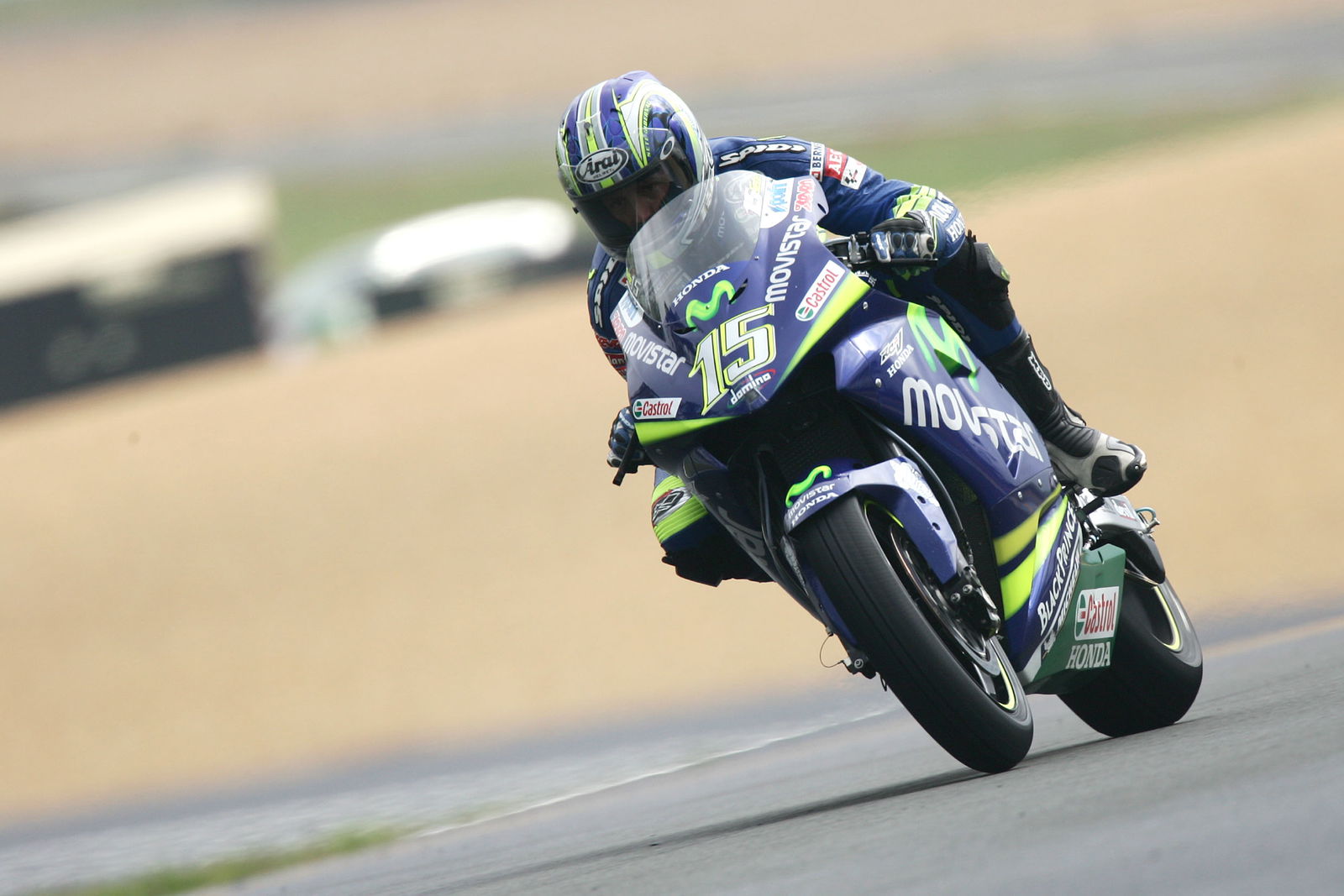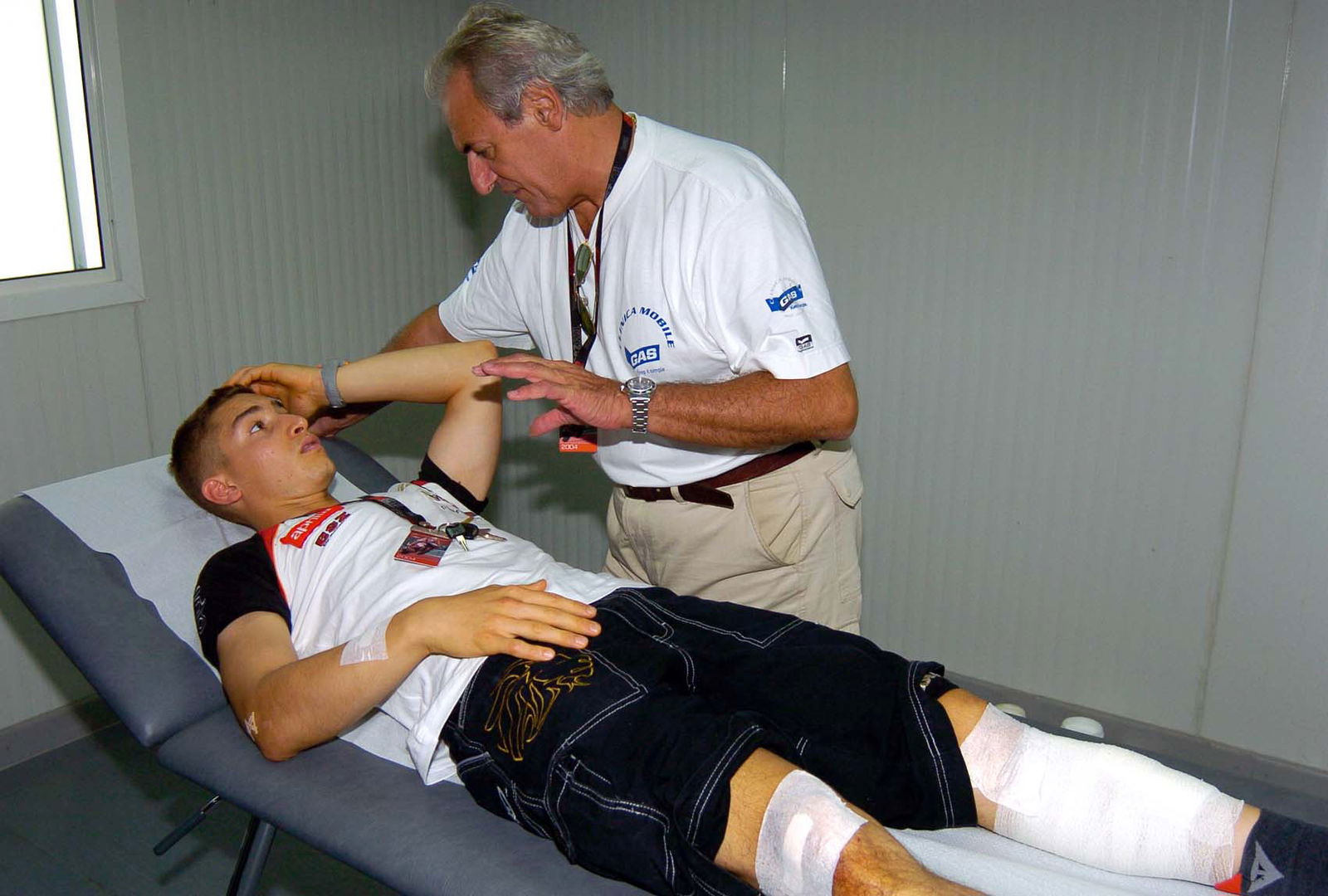Dr Costa's MotoGP dream...
It started as a dream some 33-years ago across the hills from Mugello and that dream turned into a reality 5-years later amid the Alpine splendour of Austria.
Today we take medical care at any MotoGP venue for granted. Be it a broken bone for a racing super star or a cut finger for a team chef, treatment is always available at the Clinica Mobile.

It started as a dream some 33-years ago across the hills from Mugello and that dream turned into a reality 5-years later amid the Alpine splendour of Austria.
Today we take medical care at any MotoGP venue for granted. Be it a broken bone for a racing super star or a cut finger for a team chef, treatment is always available at the Clinica Mobile.
When Alex Barros, for example, fell from the Camel Honda during the French Grand Prix at Le Mans just over two weeks ago, he was immediately taken to the clinic before being given the all clear - but it was not always like that: In the fifties, sixties and early seventies medical facilities at some circuits were appalling.
There is no doubt lives were lost because riders were not treated quickly or correctly. It was amid these circumstances that an Italian Doctor, the son of a race organiser, decided to do something about it. From that moment the grand prix race track and paddock became a safer environment to go about one's work.
On April 23 1972 the American style 200 mile race was held at the Imola circuit in Italy. Checco Costa, the chairman of the Organising Club called upon the services of his son to re-invent the medical facilities for such an important meeting.
Dr Claudio Costa, who'd graduated from medical school five-years previously, was only to happy to oblige. Not only did he recruit some of Bologna finest specialists to help but he started building the foundations that were to change the standard of medical care at grand prix venues beyond all recognition.
At first it was not easy for Dr Costa and his band of specialised helpers. They travelled to every grand prix by road, sea and rail, carrying boxes of medical equipment to treat injured riders.
Facilities at some circuits were politely called primitive and definitely not troubling organisers' cash flow. It was obvious more was needed if serious injuries were to be treated quicker and more effectively.
A mobile clinic that would travel to every event was Dr Costa's dream. Five-years and one week after that ground breaking meeting at Imola, his dream was realised when the Clinica Mobile took its place in the paddock at the Salzburgring in Austria.
The very first Clinic may have been small but its very presence and the ability of the dedicated specialists that travelled with it, saved the lives of many riders. The first few minutes after any serious accident are the most vital and their quick intervention almost certainly saved the lives of Franco Uncini, Philippe Coulon, Michael Rougerie and Virginio Ferrari's in those early years.
A new clinic was built in 1981 featuring two treatment beds instead of one - and it was needed; over 3000 patients were treated every year. This included over 300 riders with world champion Franco Uncini and Graziano Rossi, Valentino's father, receiving life saving treatment after serious crashes. World Champions Giacomo Agostini, Kenny Roberts and Franco Uncini launched the third clinic in 1988, fittingly at Imola were it had all started 16-years previously.
One of the clinic's most frequent visitors, the then current 500cc World Champion Wayne Gardner was first to test the new facilities. He crashed and fractured five bones in his right foot in testing in Yugoslavia the week before the grand prix, but still finished second in the Imola race and donated his prize money to the clinic, to thank them for the treatment and encouragement he'd received.
The late Pope John Paul II blessed the Clinic in Rome after that Imola race and the treatment continued as the Clinic continued its European tour. In 1996 over 7000 treatments were administered at the 15 grands prix .
A fourth Clinic was built in 1997 with world champion Mick Doohan showing the King of Spain, Juan Carlos around the new facility which increased the number of treatment beds to five and also introduced some specialised physiotherapists to the staff.
The Role of the Clinica was also changing. Its very presence had brought about the introduction of a Medical Director at each circuit which in turn changed the whole attitude to and structure of medical facilities. Often Doctors from the Clinica would fill the role as Medical Director.
Permanent Medical Centres at the circuit now have to provide the equipment, staff and hospital back-up to deal with life threatening emergencies. All injuries outside emergencies are still treated by the Clinica Mobile, while staff still give support and advice to local doctors and hospitals. The Clinic now assumes the role of a top casualty unit at a good hospital.
Anybody working in the MotoGP paddock - and that can number up to 3000 people at certain grands prix - know they have 24 hour medical assistance if required. It's not only very re-assuring for those a long way from home and working very long and often pressurised hours, but also for their loved ones back home.
The fifth and present day clinic was launched in Jerez three-years ago again by a bevy of world champions, which was surely appropriate. Of course that 24 hour cover is re-assuring for everybody that works in MotoGP, but it's the riders that both reap and have reaped the benefits of Dr Claudio Costa's dream, which started in Imola on that spring day.
Last year 706 riders fell during the 16 grand prix events. That's an average of 44 accidents per event. A rider crashes an average of six times a season and so most riders have 'enjoyed' the hospitality of the Clinica Mobile at some stage of their career. Last year despite those 706 accidents no rider was seriously injured.
33-years ago those 706 accidents would have certainly resulted in many serious injuries and very likely something worst.


